• The World Cultural Heritage Group Presents Uttarakhand’s Cherished Ramman Tradition at Heritage.
• Indreshwar Youth Club of Goa Dazzles Heritage with Traditional Gof Folk Dance Performance.
• Namrata Shah and Her Group Enchant Virasat with Mesmerizing Kathak and Semi-Classical Dance.
• Aarti Ankalikar Serenades Virasat with Exquisite Hindustani Classical Singing Performance.
Dehradun – November 6, 2023 – The 11th day of the Virasat Art and Heritage Festival 2023 opened with a stimulating discussion about the book ‘Madhopur Ka Ghar,’ authored by Tripurari Sharan. The book is housed at the Doon Library in Dehradun, and in this program, Tripurari Sharan spoke about his literary creation. ‘Madhopur Ka Ghar,’ penned by Tripurari Sharan, is a profoundly imaginative and touching narrative that delves into the trials and tribulations of a family in Bihar. It also explores the concept of a man grappling with life’s peculiarities. Ultimately, this novel astounds readers with the unfiltered strangeness of the fates and ironies of Indian rural life.
Born in 1961, Tripurari Sharan is a distinguished figure who graduated from St. Stephen’s College, Delhi, and pursued post-graduation in Sociology at Jawaharlal Nehru University. During his college days, he authored film reviews for ‘Dinmaan’ and had his poems published in numerous magazines. Over the course of his lengthy administrative career, he held pivotal roles in both state and central governments. His professional journey included serving as the Director of the Indian Film and Television Institute in Pune and as the Director General of Doordarshan. During his tenure in Pune, he scripted and produced two distinct feature films in collaboration with his students, ultimately retiring as the Chief Secretary of Bihar.
The day’s cultural program commenced with the inauguration by REACH Heritage’s General Secretary, Shri R.K. Singh, and other members, marked by the ceremonial lighting of the lamp.
The first segment of the cultural program showcased ‘Ramman,’ an iconic cultural heritage of Uttarakhand. In the picturesque valleys of Joshimath, Chamoli, a group of twenty-seven enthusiastic and talented individuals assembled under the banner of World Cultural Heritage to present Ramman. These artists, including Dr. Khushal Bhandari, Jagdish Chauhan, Rajendra Singh Bhandari, and others, left the audience spellbound with their performance. The presentation featured masked dances and resonated with the beats of Dhol and Damaun. The artists performed with masks made from pure wood called Bhojpatra, providing a captivating portrayal of the Mahabharata Garudeva dance, Krishna Leela with Radhika, and the mesmerizing Mor Marin dance. This group’s presentation was more than an event; it was a celebration of cultural richness that continues for a fortnight.
Ramman, a religious festival and ritual theater unique to the Garhwal region in India, is at risk of fading over time. However, in 2009, UNESCO recognized it on its Representative List of the Intangible Cultural Heritage of Humanity. The festival, specific to the Salur Dungra village in Chamoli district, Uttarakhand, is organized as an offering to the village deity, Bhumichetrapala (Bhumiyal Devta). It is celebrated every year after Baisakhi, a harvest festival that marks the new year’s beginning. The Ramman festival takes place on the ninth or eleventh day of Baisakhi, with villagers offering hariyali (sprouted barley plants) to the deity in exchange for prosperity. The festival spans ten days and includes the recitation of the local Ramkatha and performances by masked dancers depicting various aspects of life in the courtyard of the Bhumiyal deity’s temple.
Rammana’s performances commence with the invocation of Ganesha, followed by the dance of Ganesha and Parvati. This is succeeded by the Sun God’s dance, symbolizing the creation myth of Brahma and Ganesha’s birth. Subsequently, the local Ramkatha is enacted, encompassing episodes from Rama’s life, from his visit to Janakpur to his coronation upon returning from exile, sung in a total of 324 talas and stanzas. The performances also feature Jaagar Gayan, a musical rendition of local legends. The festival is sustained by the villagers of Salur-Dungra, serving as the successors, organizers, and financiers.
Ramman harmoniously combines the sacred and social aspects, portraying the history, beliefs, lifestyle, fears, and hopes of Salur Dungra villagers through various art forms, including oral, literary, visual, and traditional craft.
The second segment of the cultural program featured the presentation of ‘Gof,’ a traditional folk dance, by the Indreshwar Youth Club of Goa. Gof Shigmo, a dance performed annually by the farming community in South Goa’s Canacona, Sanguem, and Quepem talukas, is characterized by colorful strips of cloth hanging from the ceiling. Dancers skillfully weave these strips to form beautiful braids, signifying a harmonious assimilation of cultural influences left by dynasties that ruled Goa over the centuries. The dance, dedicated to Lord Krishna, is an expression of joy among Goa’s farmers after a bountiful harvest.
The third presentation showcased Kathak and semi-classical dances, performed by Namrata Shah and her group of 14 members. Their enchanting performance included Ganesh Stuti, a portrayal of Gujarat’s pride in Sanskrit, the song ‘Gopi’ written by Pandit Shri Sundar Lal Ganjani, and the presentation of ‘Hori’ and ‘Narmada Ashtakam.’ Their dance style seamlessly blended semi-classical steps with the Kathak tradition of the Jaipur Gharana. They have previously performed in front of dignitaries such as Prime Minister Narendra Modi, former Japanese President Shinzo Abe, delegations from Uzbekistan and China, and Chief Ministers and Governors of various states.
The fourth and final segment of the cultural program featured Hindustani classical singing by the renowned artist Aarti Ankalikar. Aarti’s musical journey began under the guidance of Pt. Vasantrao Kulkarni in the Agra-Gwalior Gharana and was further honed by Gaan Saraswati Kishori Amonkar, a maestro of the Jaipur Atrauli Gharana. Her unique style combines elements from both gharanas and is characterized by distinctive swara bhava, rhythm, layakari, and intricate taan patterns. She has a career spanning over 35 years and has performed at prestigious festivals and venues both in India and internationally. Aarti has also received two National Film Awards for Best Female Playback Singer and has sung extensively in Marathi, Konkani, and Hindi film industries.
Tabla player Shubh, who accompanied Aarti Ankalikar, comes from a family with deep musical roots. He is the grandson of tabla player Shri Kishan Maharaj and is also the son of the renowned Kathak dancer Mr. Vijay Shankar. Shubh began his tabla journey at a young age under the tutelage of his maternal grandfather, Pandit Kishan Maharaj, and later joined the family tradition of Shri Kanthe Maharaj. He has performed on many prestigious stages and had the opportunity to accompany legends like Pt. Shiv Kumar Sharma and Ustad Amjad Ali Khan.
The Virasat Art and Heritage Festival 2023, running from October 27 to November 10, is a cultural extravaganza that provides a platform for experiencing art, culture, and music presented by renowned masters of classical music and dance. The festival includes a crafts village, cuisine stalls, an art fair, folk music, Bollywood-style performances, heritage walks, and more, allowing people from across the country to explore India’s rich cultural heritage.
Established in 1995 in Dehradun, REACH Heritage has been organizing the Virasat Mahotsav with the primary objective of preserving and promoting India’s art, culture, and heritage. The festival has played a crucial role in reviving rural arts and preserving village traditions, thus ensuring the continuity of classical and contemporary arts.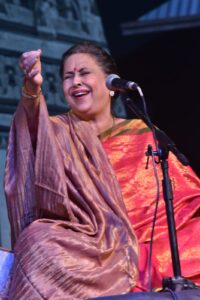
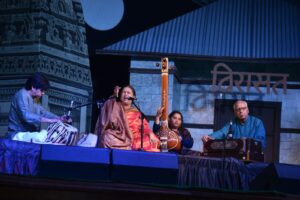
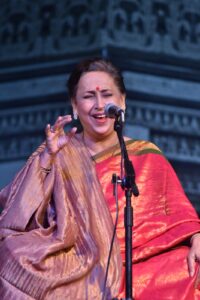
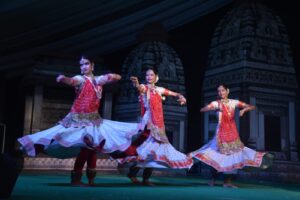
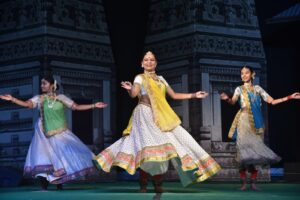
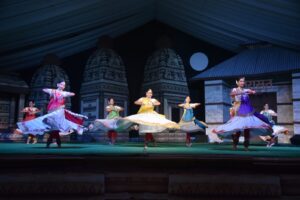
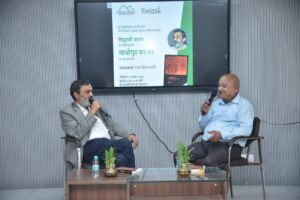
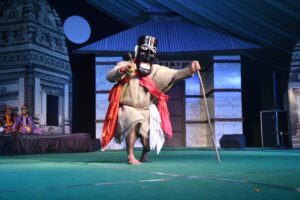

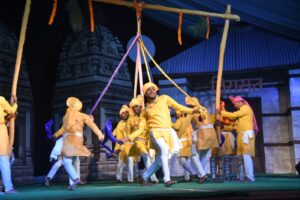
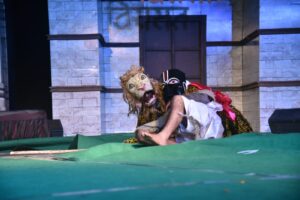
Virasat 2023 promises an unforgettable musical and cultural journey. For further
